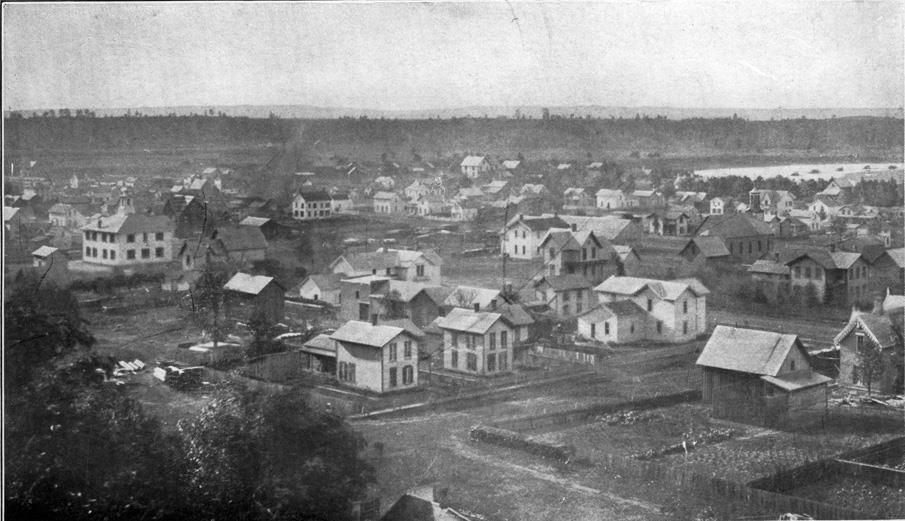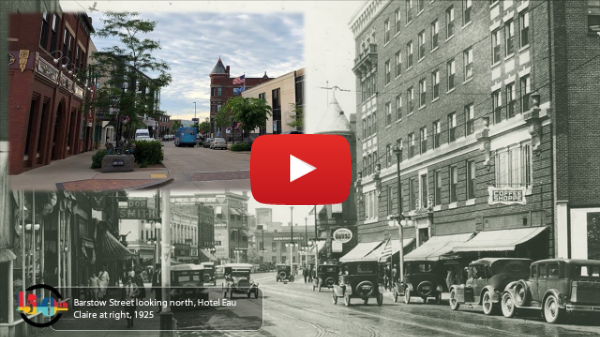|
| Museum Happenings | Issue: March 25, 2022 |
|
|
|
I've heard there are robins in the area, but I've only seen a few cardinals myself. Still, it's Spring! At the Chippewa Valley Museum, spring means a Charter Bank student art show, a new museum exhibit, school tours, Teen Guide Program applications, summer class signups, and a volunteer recognition banquet. Spring is a busy time of year.
| .jpg) | |
|
|
|
Life In Eau Claire 100 Years Ago |  |
Program: March 29
6:30 pm - 7:30 pm
CVM's Curator of Collections Diana Peterson chronicles 1922 as presented in Eau Claire's newspapers. This program includes objects and photos from the museum's collections as well as history with state and national significance.
In Person, which includes admission to museum: General audiences: $10/adult, $8/senior, $5/student 5-17. Free for members. Register here for in person. (Remember to login through the new registration system to receive your member discount.)
Virtual - free with support from the National Endowment for the Humanities. Register for Zoom presentation.
|
| |
|
|
See It Before It's Gone! | The Origins & Odyssey Art Exhibition is only up through April 8. This year’s winter art exhibit is presented in partnership with Artisan Forge Studios. Guest Curator Christy Ann Skuban asked 21 local artists to submit early, mid, and late career art pieces. Together, the pieces create a “Then and Now” look at local art and artists.
| | Learn More |
|
| Opening April 1st | ChARTer Bank Student Art Show | Enjoy 2- and 3-dimensional works by dozens of talented young artists from Eau Claire area high schools. Art show will be viewable at the museum and online at cvmuseum.com through May 21st.
|
|
| | Teen Guide Applications Due April 16 |  |
The Teen Guide program is open to students ages 13-17. Students will
Meet interesting people Gain valuable workforce and relationship skills Go behind the scenes at the museum Immerse themselves in local history and culture
It's a great experience, but don't take our word for it:
I was a teen tour guide way back in the 1990s. I loved it! Now I'm a mother with small children and I take them to the museum often and tell them about my time as a teen guide.It also helps get hours that are required for confirmation and graduation for some kids. -- Sara T.
| | Learn More and Apply |
|
| |
|
Volunteer
Recognition Dinner | Invitations are in the mail for an in-person event to celebrate museum volunteers.
Volunteers are an essential part of how Chippewa Valley Museum connects visitors with our region's history and culture. If you have volunteered at the museum and have not received an invitation to the 2022 Volunteer Recognition Dinner by April 2nd, please contact Angela (715) 834-7871. |
|
|
| |
|
| April | 21 | Register or Sign up today | | Find out more | April 21, 6:30 - 7:30 | Schleglemilch House, 517 S. Farwell | An Evening of Conversation with Tom BarlandLearn about the Schleglemilch family and their house from Herman and August Schlegelmich's great grandson, Thomas Barland. |
|
April | 30 | Then and Now: 150 Years of Change in Eau Claire Opens | April 30, 12:00-5:00
A new exhibit to help Eau Claire celebrate its150th anniversary. Exhibit runs through December 31.
Members -- watch for your invitation to a Members-Only exhibit opening on April 28 |
|
| Peace and goodwill,
Carrie Ronnander
Chippewa Valley Museum Director
|
|
| PS: Eau Claire's 150th birthday year celebration is well under way: WQOW ran a five-part series on the history of Eau Claire last week (click the next arrow to see all five episodes), Volume One published a special keepsake 150th anniversary edition chock full with local history, we ate birthday cake on March 19th, and Interim City Manager Dave Solberg re-read the "Eau Claire Day" proclamation passed by the City Council on March 8.
But what was Eau Claire like in 1872? It was a boom town, and it felt and looked like a boom town. Between 1860 and 1870, the community grew close to 200%, from 1,800 people to just under 5,500. |
|
| Wood frame buildngs went up quickly, often with more haste than care, and fires destroyed buildings almost as quickly. In December 1871, the 1,500 seat Music Hall on Barstow Street had burned down, though it was replaced with a new 1,000 seat Music Hall within the year.
Domestic animals -- think horses, swine, and goats, not dogs and cats -- were abundant within the city and needed to be restrained or contained at all times, except for cattle. From April 15 - November 15, cattle could roam at will during the day as long as they were penned up after 10 pm.
|  |
People walked or traveled by horse along dirt streets covered with sawdust and shingle shavings used to stabilize the sandy roadbeds. A drainage system did not exist yet. The only graded and planked hill was State Street (not Harding Ave). Residents needed to disinfect or deodorize their privies and/or cesspools or risk a fine.
To cross teh rivers and get about the city, people used the bridges at Dewey Street, Barstow Street, and Kelsey (Grand) Ave, the only bridges in town. A ferry ran in Shawtown. The West Wisconsin Railway had arrived from Milwaukee in 1870 -- with a colossal celebration for 10,000 people -- but it wasn't until February 1872 that the final connection to the railroad in St. Paul was made. With the railroad came the telegraph.
That's a bit of what Eau Claire was like in 1872. The above photo shows Eau Claire in 1868 as seen from the East Side Hill look southwest. In 1872 there would have been a hundreds of more buildings in the city.
The upcoming exhibit, Then & Now: 150 Year of Change in Eau Claire will look at 1872 and the many years since. It opens April 30th. Here's a sneak peek slideshow showing some of these changes.
|  | | Send to a Friend |
|
|
|
|